What Are MRR and PRR Resell Rights? Explained for Digital Creators & Small Businesses

Digital products are booming right now, and it’s no surprise—profit margins are unbeatable. While many creators and brand owners are eager to dive into this lucrative market, the thought of starting from scratch can feel overwhelming. That’s where the MRR/PLR market steps in. Private labeling has been a game-changer in the physical product world for years, but digital marketers are now shining a spotlight on its potential for digital goods. The opportunity is massive, and you can claim your slice of the pie—but only if you fully understand these licenses and how to leverage them effectively.
When navigating the digital marketplace, acronyms like MRR (Master Resell Rights) and PLR (Private Label Rights) can seem confusing, especially when paired with terms like “Commercial Use Assets.” However, understanding these distinctions is crucial for small business owners and content creators looking to scale their offerings and monetize effectively. Here’s a clear breakdown of what these licenses entail and how you can use them to grow your brand.
What Are MRR and PLR?
Master Resell Rights (MRR) allow you to resell a product to your customers as-is. You can market the product under your name and keep 100% of the profits, but you cannot claim authorship or modify the content unless explicitly stated. Often, MRR products include digital items like eBooks, templates, courses, and software. MRR is ideal for entrepreneurs who want to offer ready-made products without worrying about creating them from scratch.
Private Label Rights (PLR) take it a step further, granting you the right to edit, rebrand, and customize the product as your own. With PLR, you can transform a generic template into a unique offering tailored to your audience. For example, a PLR recipe book can be edited with your branding, new recipes, or cultural twists to make it exclusive to your niche.
The Difference Between MRR/PLR and Commercial Use Assets
Commercial use assets, such as stock photos, videos, or templates, allow you to use the purchased item to create content or products for your business. However, they typically do not allow redistribution or resale. For instance, a commercial license for a Canva template lets you use the design in your marketing but doesn’t permit you to sell that template to others.
By contrast, MRR and PLR licenses enable resale or redistribution, making them more valuable for entrepreneurs looking to create income streams through digital product sales.
How Small Businesses Can Leverage MRR and PL
1. Launch Digital Product Lines
For small businesses, MRR products are a great way to enter the digital product market quickly. Imagine being a beauty brand offering downloadable skincare guides or makeup tutorials. With MRR, you can sell these resources without dedicating time to content creation.
For those wanting more customization, PLR gives you the flexibility to add your unique voice and expertise. For example, a childcare business could purchase PLR educational guides and tailor them into branded eBooks that align with their philosophy.
2. Save Time and Resources
Both MRR and PLR products save time, especially for solopreneurs. Instead of creating an email course from scratch, you could use PLR email sequences, modify the tone and details, and start your drip campaign in days.
3. Expand Revenue Streams
Use MRR products to upsell in your business. If you’re a fitness trainer, you could add a “Get Fit at Home” eBook to your services. Similarly, PLR content allows you to create a wide variety of exclusive offerings, from membership-only content to physical print products like journals or workbooks.
How Content Creators Can Use These Licenses
1. Diversify Income Through Resell Products
Content creators can add value for their audience by offering MRR or PLR products. If you’re a YouTuber focused on personal finance, selling PLR budgeting templates under your brand is a win-win for both you and your audience.
2. Establish Authority
PLR content allows creators to position themselves as experts. By rebranding PLR articles or courses, creators can deliver high-quality, tailored information while saving time.
3. Offer Exclusive Access
Leverage MRR or PLR content to create exclusive membership tiers. For example, Patreon creators can offer downloadable guides, templates, or courses as perks for their most loyal followers.
Choosing the Right License for Your Goals
-
If you want to resell without modification: MRR is your go-to option.
-
If you want to customize and rebrand products: PLR gives you full creative control.
-
If you need assets for content creation: Opt for commercial use licenses.
My Final Thoughts
Incorporating MRR and PLR products into your business strategy can unlock new revenue streams and enhance your offerings without requiring extra hours of creation. The key is understanding your audience’s needs and choosing the right license to serve them effectively. Whether you’re a beauty entrepreneur, content creator, or small business owner, these tools can help you scale with ease while focusing on what you do best—delivering value.
With our curated collection of product photo assets, e-book templates, and website design kits, you can take your brand to the next level without breaking a sweat. Whether you need a polished look for your product listings or a professional edge for your eBooks, we’ve got you covered. Let’s turn your frustration into opportunity—and your vision into reality.
0 comments



